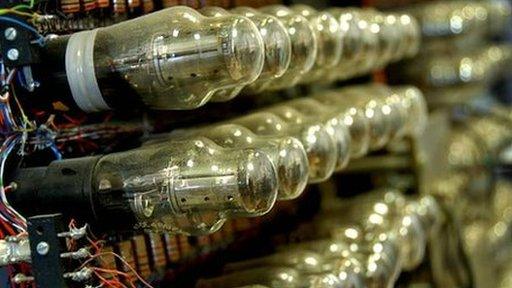Veterans gather for Colossus 70th anniversary
- Published

The Mark 2 Colossus used 2,400 valves to help it crack messages sent by German generals
The 70th anniversary of the pioneering Colossus computer is being celebrated at Bletchley Park.
The machine was first used to crack messages sent by Hitler and his generals on 5 February 1944.
The celebration will bring together some of the machine's creators and operators at The National Museum of Computing (TNMOC).
The machine's code-cracking prowess will be demonstrated on the day using the museum's rebuilt Colossus.
Now widely recognised as the first electronic computer, Colossus was kept a secret for 30 years because of the sensitive work it did during World War Two to crack German codes.
The work of the Colossus machines to decipher messages scrambled using the Lorenz enciphering machine that passed between the Wehrmacht's commanders is widely thought to have shortened the war and saved countless lives.
Colossus was created by Post Office engineer Tommy Flowers, and his first prototype was built out of parts from telephone exchanges including 1,600 valves. Later versions used even more valves and by the end of the war 10 of the machines were in use in the UK.
The celebrations will bring together some of the women who kept the different machines running as well as some of the engineers who built and maintained them. During wartime, about 550 people worked in the Bletchley Park unit that ran Colossus.
Also attending will be some of the children of the machine's creators and operators.
Most of the machines were broken up and the plans destroyed after the war in an attempt to keep the work secret and to conceal the fact Britain was still using two of the machines to read Soviet messages.
"The achievements of those who worked at Bletchley Park are humbling," said Tim Reynolds, chair of TNMOC. "This day is in honour of all the men and women who worked on breaking the Lorenz cipher."
- Published27 January 2014
- Published24 December 2013
- Published3 September 2013
- Published20 November 2012